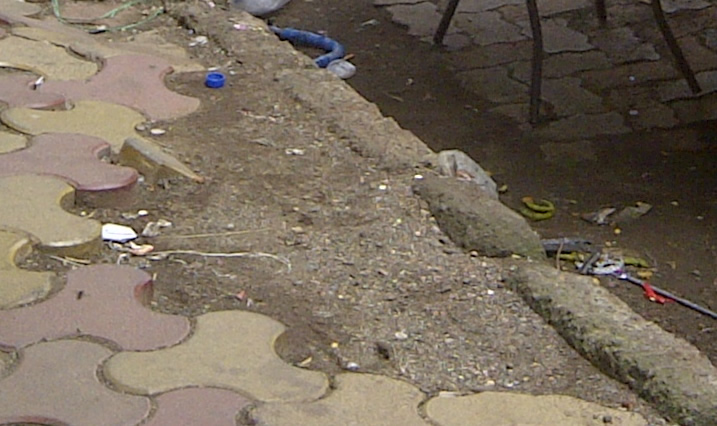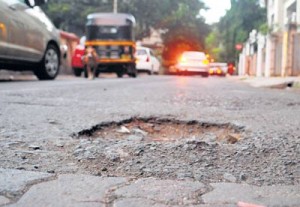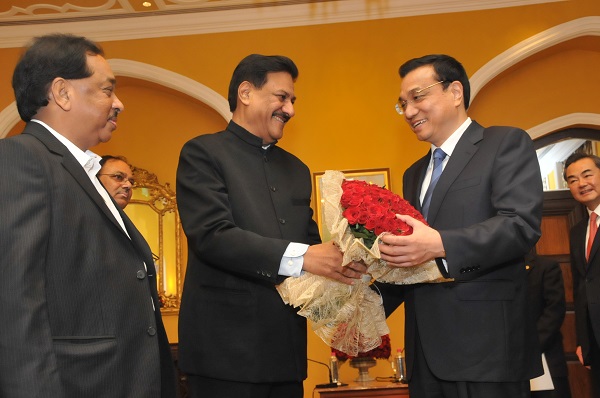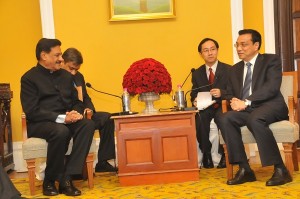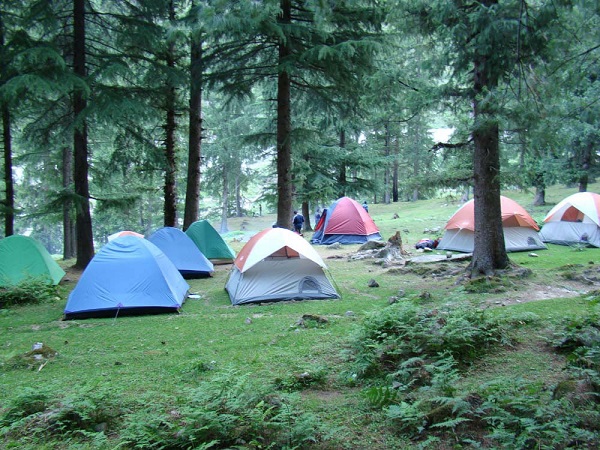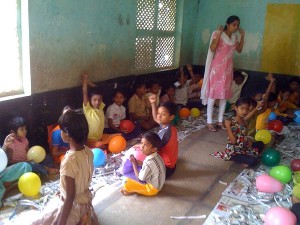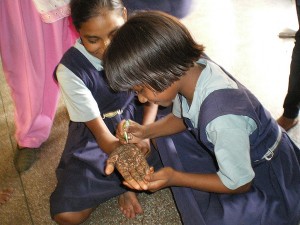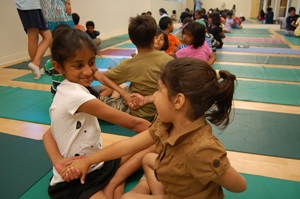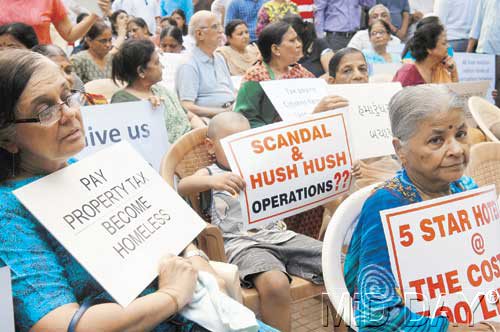Reshmy Kurien, who started the ‘Bombay Chowparty’ food blog talks about her food love and what makes her blog popular.
by Medha Kulkarni
Our country, in the past few years, has really woken up to global cuisine, with even non-chefs taking an interest in culinary activities. Fuelled by the sudden popularity of cooking-based reality shows, a number of people across the world and in India have taken to experimenting in the kitchen.
Bombay Chow-party is a blog that has been started by one such food enthusiast based in Mumbai. In 2010, the Andheri-based Reshmy Kurien (in pic on left) started the blog simply as  a place to record her encounters with food and share her recipes, thoughts and ideas with others. In time however, her blog had grown into a entity of its own – as she kept writing and cooking, the blog became a catalyst for her to commit more seriously to her passion for food and to learn more, whether about food photography or about her own relationship with food and baking/cooking.
a place to record her encounters with food and share her recipes, thoughts and ideas with others. In time however, her blog had grown into a entity of its own – as she kept writing and cooking, the blog became a catalyst for her to commit more seriously to her passion for food and to learn more, whether about food photography or about her own relationship with food and baking/cooking.
While food blogging by itself is quite common, what sets Bombay Chow-party apart is Reshmy’s unique approach to it. Also, by sharing her love and passion for food and food based experiments in such creative and fun ways, Reshmy is providing passionate foodies in the city and the country with some fabulous ways to explore something new.
The blog’s popularity also served as a platform for putting her in touch with other foodies. “People wrote in with queries and comments and I discovered the pleasure in sharing my passion with other like-minded people and helping people discover new and exciting food and start experimenting in their own kitchen,” the 33 year-old says.
Setting up a food blog
Reshmy now works on the blog full time, and says that she has no formal training in cooking. “It’s all trial and error, and the occasional food workshop,” she explains. The blog has begun to get noticed more since last year when she started blogging more frequently, Reshmy adds.
The money factor
No money is spent on the blog. “The only money gets spent on cooking but that’s something one does anyway,” she explains. Her food workshops are reasonably priced at Rs 3,000 per head and are “more of a food party than workshops,” she says.
The ingredients
“I source my ingredients from various places. For the workshops, I try to get ingredients that are easy to find so that people can make these at home, too. Otherwise I like places like Nature’s Basket, and I often stock up on ingredients when travelling abroad,” Reshmy says.
Beyond food
 Today, Bombay Chowparty has extended far outside the realm of the blog and has grown into an outfit that helps people discover experience and create new food through the CReatE Workshops and ‘foodventures’. “These are events that are organised with the aim of helping people discover and create new food and are about pushing the boundaries of how people engage with food. The ‘foodventures’ entail unique food trails around India, and are customised culinary experiences for tourists in Mumbai, Goa and Kerala,” she explains.
Today, Bombay Chowparty has extended far outside the realm of the blog and has grown into an outfit that helps people discover experience and create new food through the CReatE Workshops and ‘foodventures’. “These are events that are organised with the aim of helping people discover and create new food and are about pushing the boundaries of how people engage with food. The ‘foodventures’ entail unique food trails around India, and are customised culinary experiences for tourists in Mumbai, Goa and Kerala,” she explains.
The guided food trails introduce participants to local cuisine and food culture through culture walks, visits to the traditional wet and dry markets, trails to the best eating joints, cooking classes and meals at family homes to sample authentic traditional cuisine.
Reshmy also organises gourmet workshops, that are about encouraging people to discover world cuisine in their own kitchen. “I see a lot of parallels between design and food. The creative process for both includes science and art,” says Reshmy, who is trained as a designer and who was the design head of a company till last year.
Thus the CReatE workshops, entail both creating and enjoying great food, and unlike most cooking classes/workshops, the focus of CReatE is not so much about recipes and is, instead, on introducing participants to what Reshmy calls “the guiding principles,” and thus equip them with the know-how to interpret/improvise with the concept and thus be creative with food. “These events are always a bit of a party and end with a feast. Because cooking/baking is a joyful activity and the greatest incentive for me and most other foodies is always the food, the food-talk, music, wine and fun,” says Reshmy, when asked about her workshops.
So what’s the response been like and which has been the most popular workshop till date? “I think the most popular offering so far and also our first one was the Breads Workshop. The people who signed up were an interesting mix of both men and women – from a musician to a film producer; a college student to a banker. What tied everyone together was a common love for food and in particular, bread. Given the popularity of this one, I am now planning a second one around whole wheat bread soon.” (See bottom for details)
What’s next?
A motorbike ‘foodadventure’ is also being planned and promises to be just as exciting as it sounds! The trail will follow the stunning Konkan coast and is being organised in partnership  with Enfield riders. Starting from Mumbai and going all the way down Goa and into Kerala, Reshmy and her food adventurers will be covering the incredible variety of the fantastic food and breathtaking scenery that the western coast has to offer.
with Enfield riders. Starting from Mumbai and going all the way down Goa and into Kerala, Reshmy and her food adventurers will be covering the incredible variety of the fantastic food and breathtaking scenery that the western coast has to offer.
“We will be sampling a lot of amazing food at local eating joints and family homes, stopping by the best markets to buy local offerings of foods and ingredients (like the sausages and feni from Goa, vanilla, pepper and spices from Kerala) and conducting culinary classes on the traditional food of the coast – all the while riding down the coast on the Royal Enfield bikes. We are currently working actively on the exact itinerary with Enfield Riders and planning to announce the Foodventure ride soon,” says Reshmy.
Best compliment ever
“What delights me the most is when somebody tries a recipe. I once posted a recipe at 8 am and by 9 pm, someone commented on Twitter, saying they tried it and that everyone in their family loved it,” she grins. The blog Finely Chopped also praised Reshmy’s bread.
Do you want to be part of a bread-making workshop with Reshmy this month? Five selected readers will get the chance to learn to make different kinds of bread and have loads of fun while they do it. Write to editor@themetrognome.in for registration details.
(Pictures courtesy bombaychowparty.wordpress.com)
 Yesterday, security technology giant McAfee unveiled results of its ‘India’s Most Dangerous Cricketer’ study which researched this season’s top celebrities of the cricketing world on their risk quotient in the Indian cyberspace. Christopher Henry ‘Chris’ Gayle took the top slot in the survey, followed by Brett Lee and S Sreesanth.
Yesterday, security technology giant McAfee unveiled results of its ‘India’s Most Dangerous Cricketer’ study which researched this season’s top celebrities of the cricketing world on their risk quotient in the Indian cyberspace. Christopher Henry ‘Chris’ Gayle took the top slot in the survey, followed by Brett Lee and S Sreesanth.
